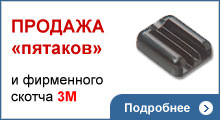2009 Ford Focus
Windshield, quarter glass and back glass removal and replacement instructions.
2009 Ford Focus. 
Vehicle type: Four-door sedan.
NAGS® numbers*: Windshield part number FW1694 solar, acoustic interlayer; quarter glass DQ11354/55 solar, locator pins; and back glass DB11351 solar, heated.
Helpful tools or supplies: Ford mirror tool.
Watch for: The cowl panel has several underside retainers with an aggressive grip that can cause the panel to break during removal. Release these retainers slowly. The quarter glass is exposed on all sides, and the door weatherstrip is tucked under the front leading edge. The replacement quarter glass must be decked low enough to firmly pinch the weatherstrip between the glass and body.
*With permission from National Auto Glass Specifications. Call NAGS at 800/551-4012 or visit http://glass.mitchell.com/.
A. Windshield.
Preparation.
1. Cover the front seats, floorboards, dash and steering wheel with a clean drop cloth or disposable plastic covers. Note: Always wear eye and hand protection when working with glass. Make sure you have the right glass and moldings and that the urethane systems you are about to use are current. Windshield part number is FW1694.
2. Drape the fender with a fender cover and tape up any vulnerable areas on the vehicle to protect against possible damage. Tape up the defroster vents to prevent debris from falling into the openings.
3. Insert a Ford mirror tool or a thin, slot pocket screwdriver between the base of the mirror and the mirror pad. Slide the tool upward and wiggle the mirror off the pad.
4. Remove the windshield-wiper nut covers.
6. Remove the windshield-wiper nuts using a 13-millimeter wrench or socket. Move the wiper arm in an up-and-down motion to break it loose from the post, or use a wiper-puller. Caution: Wipers can be hard to remove. To avoid stressing the post, use a wiper-puller.
7. The cowl has seven leading-edge locking devices that can easily be separated by pinching the male connector with your fingers.

There are several underside retainers with an aggressive grip that can cause the cowl panel to break during removal. Release the leading-edge clips and carefully work the retainers out of the mounting holes using a pry tool.

Remove the panel and set it in a safe place.
8. The top and side moldings are typical wraparounds. You can use a universal molding as a replacement, but make sure it has a "feature line” to mimic the OE. Work one of the small ends of the molding out from under the glass. Then grasp the end of the molding and pull it free from the edge of the glass. Note: Before beginning windshield removal, verify the new windshield is the correct one and the urethanes and primers are current. Never use outdated products as this could jeopardize the structural integrity of the vehicle and the safety of its passengers.
Removal.
9. Make sure cutting blades are sufficiently sharp.
10. Before cutting out the windshield, remove contaminants from the glass and pinchweld to prevent contact with the urethane.
11. Use the cutting tools of your choice to remove the glass from the adhesive bead. If you use a power tool, lubricate the cutting area with water. Spray the top and sides; then make your cuts. Be careful not to hit or cut the gravity stops; mark their location with a marking pencil or retention tape.
12. Take the windshield out of the opening using vacuum cups. Make sure the vacuum cups do not overlap a crack in the glass. Lift the glass and place it on a windshield stand or suitable workstation.
Installation.
13. After cutting the windshield out, remove contaminants such as dirt, moisture and debris from the pinchweld. Clean the dashboard.
14. Attach the top and side moldings to the glass edge.
15. Dry fit the new glass to the opening. Mark your glass using a grease pencil or retention molding tape.
16. Place your vacuum cups on the new windshield in the appropriate location.
17. Set the windshield onto the old urethane.
18. With the windshield resting in the opening, make sure it is in the right spot.
19. Adjust both sides to the correct setting, marking the passenger side, then the driver side. Lift the glass and place it on a windshield stand or suitable workstation.
20. Follow the urethane manufacturer’s recommendations for installation.
21. Clean the inside of the windshield using a urethane manufacturer-recommended product. Do not touch the bonding area of the windshield after cleaning, prepping or priming it.
22. Wear powder-free Nitrile gloves to protect against harsh chemicals.
23. Apply the glass prep and primer following the urethane manufacturer’s recommendations.
24. Using the tool of your choice, remove the original urethane bead, leaving 1 millimeter to 2 mm of urethane on the pinchweld. Make sure there are no contaminants and do not touch the pinchweld after prepping the area.
25. Apply the pinchweld primer only to the areas where needed, and follow the urethane manufacturer’s recommendations. Allow preps and primers to dry as recommended by the urethane manufacturer.
26. Apply a triangular bead of urethane to the same path as the freshly cut urethane on the pinchweld. Before cutting your V-notch, cut the tip off of your nozzle with a nozzle-cutter. With the cut nozzle, measure to the top of the roofline, and at 1/16-inch higher than the roofline, make a mark on the nozzle with a pen or marker. Notch the nozzle up to the marked line; this will give you the appropriate triangular bead.
27. Lift the windshield from the windshield stand or workstation using vacuum cups. Set the windshield on the urethane at the mark you made during your dry fit. Lower the driver’s side of the windshield onto the urethane and line it up with the dry-fit mark; it is now in place.
28. The windshield is now ready to be decked. Press firmly to ensure a good seal.
29. Before re-installing the parts, check for leaks. Use a leak detector to go over the perimeter of the windshield. If you find a leak, apply more pressure or add more urethane to the spot and ensure that the glass makes contact with the wet urethane.
30. Re-install the removed parts in reverse order.
31. Allow the urethane to cure according to the urethane manufacturer’s recommended cure time before returning the vehicle to the customer. Warning: Disregarding the safe drive-away time that your urethane manufacturer recommends could jeopardize the structural integrity of the vehicle and the safety of its passengers.
32. You have completed the removal and replacement of the windshield.
B. Quarter glass.
Removal.
1. Make sure you have the right glass. Quarter glass part number is DQ11354/55.  The glass is exposed on all sides, and the door weatherstrip is tucked under the front leading edge.  When replacing the quarter glass, the glass must be decked low enough to firmly pinch the weatherstrip between the glass and the body. 2. Pull the weatherstrip from under the front leading edge of the glass.
3. Using the tool of your choice, cut the adhesive bonding the glass to the body. There is no need to remove the interior moldings unless you plan to blind cut.
Installation.
4. After cutting the quarter glass out, remove contaminants such as dirt, moisture and debris from the pinchweld.
5. Dry fit the new glass to the opening. Mark your glass using a grease pencil or retention molding tape.
6. Place your vacuum cups on the new quarter glass in the appropriate location.
7. Set the glass onto the old urethane.
8. With the glass resting in the opening, make sure it is in the right spot and make your marks.
9. Lift the glass and place it on a windshield stand or suitable workstation.
10. Follow the urethane manufacturer’s recommendations for installation.
11. Clean the inside of the quarter glass using a urethane manufacturer-recommended product. Do not touch the bonding area of the glass after cleaning, prepping or priming it.
12. Wear powder-free Nitrile gloves to protect against harsh chemicals.
13. Apply the glass prep and primer following the urethane manufacturer’s recommendations.
14. Using a pinchweld scraper, remove as much of the original urethane as the urethane manufacturer recommends. Before removing the old urethane, make sure there are no contaminants and do not touch the pinchweld after prepping the area.
15. Apply the pinchweld primer only to the areas where needed, and follow the urethane manufacturer’s recommendations. Allow preps and primers to dry as recommended by the urethane manufacturer.
16. Apply a triangular bead of urethane to the same path as the freshly cut urethane on the pinchweld. Before cutting your V-notch, cut the tip off of your nozzle with a nozzle-cutter. With the cut nozzle, measure to the top of the roofline, and at 1/16-inch higher than the roofline, make a mark on the nozzle with a pen or marker. Notch the nozzle up to the marked line; this will give you the appropriate triangular bead.
17. Lift the quarter glass from the windshield stand or workstation using vacuum cups. Set the quarter glass on the urethane at the marks you made during your dry fit; it is now in place.
18. The quarter glass is now ready to be decked. Press firmly to ensure a good seal.
19. Before re-installing the parts, check for leaks. Use a leak detector to go over the perimeter of the quarter glass. If you find a leak, apply more pressure or add more urethane to the spot and ensure that the glass makes contact with the wet urethane.
20. Re-install the removed parts in reverse order.
21. Allow the urethane to cure according to the urethane manufacturer’s recommended cure time before returning the vehicle to the customer.
22. You have completed the removal and replacement of the quarter glass.
C. Back glass.
Removal.
1. Make sure you have the right glass. Back glass part number is DB11351.

The glass is exposed on all sides. Take care to avoid damage to the painted surfaces.

2. Disconnect the defroster connectors. There is no need to remove the interior molding.
3. Cut out the glass using the tool of your choice. A cold knife or outside cutting tool is recommended to reduce the chance of damage to the walls of the pinchweld.
Installation.
4. After cutting the back glass out, remove contaminants such as dirt, moisture and debris from the pinchweld.
5. Dry fit the new glass to the opening. Mark your glass using a grease pencil or retention molding tape.
6. Place your vacuum cups on the new back glass in the appropriate location.
7. Set the back glass onto the old urethane.
8. With the back glass resting in the opening, make sure it is in the right spot.
9. Adjust both sides to the correct setting, marking the passenger side, then the driver side. Lift the glass and place it on a windshield stand or suitable workstation.
10. Follow the urethane manufacturer’s recommendations for installation.
11. Clean the inside of the back glass using a urethane manufacturer-recommended product. Do not touch the bonding area of the back glass after cleaning, prepping or priming it.
12. Wear powder-free Nitrile gloves to protect against harsh chemicals.
13. Apply the glass prep and primer following the urethane manufacturer’s recommendations.
14. Using a pinchweld scraper, remove as much of the original urethane as the urethane manufacturer recommends. Before removing the old urethane, make sure there are no contaminants and do not touch the pinchweld after prepping the area.
15. Apply the pinchweld primer only to the areas where needed, and follow the urethane manufacturer’s recommendations. Allow preps and primers to dry as recommended by the urethane manufacturer.
16. Apply a triangular bead of urethane to the same path as the freshly cut urethane on the pinchweld. Before cutting your V-notch, cut the tip off of your nozzle with a nozzle-cutter. With the cut nozzle, measure to the top of the roofline, and at 1/16-inch higher than the roofline, make a mark on the nozzle with a pen or marker. Notch the nozzle up to the marked line; this will give you the appropriate triangular bead.
17. Lift the back glass from the windshield stand or workstation using vacuum cups. Set the back glass on the urethane at the mark you made during your dry fit. Lower the driver’s side of the back glass onto the urethane and line it up with the dry-fit mark; it is now in place.
18. The back glass is now ready to be decked. Press firmly to ensure a good seal.
19. Before re-installing the parts, check for leaks. Use a leak detector to go over the perimeter of the back glass. If you find a leak, apply more pressure or add more urethane to the spot and ensure that the glass makes contact with the wet urethane.
20. Re-install the removed parts in reverse order.
21. Reconnect the defroster connectors.
22. Check the operation of the back glass electrical systems.
23. Allow the urethane to cure according to the urethane manufacturer’s recommended cure time before returning the vehicle to the customer. Warning: Disregarding the safe drive-away time that your urethane manufacturer recommends could jeopardize the structural integrity of the vehicle and the safety of its passengers.
By Bob Beranek.
© 2009 National Glass Association.
Посмотреть другие статьи
|















